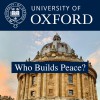OxPeace 2022 Session 2: Part 1
When apartheid crumbled at the close of the 1980s, two major conflicts were gripping South Africa: that between the white minority government (with its security forces, police and army) and the majority population, and the low-intensity civil war which pitted Zulus loyal to the conservative Inkatha movement against ANC supporters in Natal and KwaZulu. With Mandela’s release and the unbanning of the liberation movements in February 1990 it was expected that two things would follow: the start of multi-party talks to devise a new non-racial constitution, and the cessation of the ANC-Inkatha war. Neither happened. Instead the ANC- Inkatha war spread to the industrial townships around Johannesburg, A crisis point in 1991 led to the negotiation of the National Peace Accord, facilitated by civil society (church and business leaders). To implement itself, the NPA set up a complete infrastructure for peace involving political organizations, civil society and the security forces, at national, regional and local levels. The country was divided into 11 regions, which formed over 260 local Peace Committees. Activities included conflict resolution, training, ‘marketing’ peace, peace monitoring to implement the NPA’s Codes of Conduct for political organizations and security forces, and socio-economic reconstruction and development. The peaceful election in April 1994 was in no small part due to the structures and their 18,500 peace monitors. Although many felt there was more peacebuilding to be done, the structures were dismantled at the end of 1994, except for maintaining a minimal provincial presence in KwaZulu-Natal until 2001. The NPA structures, which were entirely home-grown, remain the most comprehensive example of such an ‘Infrastructure for peace’ (I4P).




